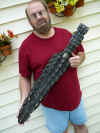You are on Swords, Daggers & Knives, Page 1
Contents: Swords, daggers knives made of Swordfish, Hawaiian War club, fossil Alligator jas bone & blue marlin bills, carved Swordfish bills, plain Swordfish bills
|
SWORDS, DAGGERS & KNIVES
AS ART A PREMIER COLLECTION OF HAND CARVED SWORDFISH & MARLIN BILLS with woven handles, similar to their Polynesian War Implement counterparts in Hawaii's history. Captain John's reclamation of the fish bills for use as artwork mirrors our own philosophy of recycling as much of an animal as possible. BLUE MARLIN: The knot work and design is created by Captain John. Each bill is unique, like people - no two are alike, each vary in style, shape and character. Blinded as a child, Capt. John spent four years in the Salem, Oregon Blind School only to have his sight restored in later years. While at school, he learned the basic art of weaving, hammock making, caning and working with his hands. As an adult, Capt. John became a commercial fisherman where basic knots were second nature and soon became an abiding hobby. He has over 50 years of experience in the art of tying knots. SWORD FISH After commanding fishing vessels in Hawaii, he chose fish bills (Marlin and Swordfish) as his medium, turning the fish bills that are normally thrown overboard into works of art. Fish, minus their bills, are packed in ice and sold on land for human consumption. Capt. John's Swordfish Art has been presented to the National Marine Fisheries service in Washington D.C. as a representation of how fish by-products (waste) can be used as an art form and representation of Polynesian Culture and History. His artistry has been accepted by the Pacific Handcrafters Guild in Honolulu, Hawaii where not only the art is judged, but the knowledge and history of each item as well. We are pleased and proud to share some of his work here for you to see and purchase. SEE A FULL ARTICLE ON THE HISTORY OF THE USE OF FISH BILLS at the bottom of this page |
| KNIVES IN STINGRAY HIDE SHEATHS |
|
#KNIFE-1 11" long x 2-1/4" wide, Solid black genuine STINGRAY HIDE, rawhide laced edge, cowhide back; snap closure, 3-3/4" slot belt opening. Stainless steel knife with wood & brass handle is FREE. $115 |
| SOLD - DAGGERS AND KNIVES BELOW |
|
SOLD - SWORDFISH BILL SWORDS
Artist unknown |
|
#B-32-SOLD Swordfish bill sword is 23" long x 1-3/4" widest, edged with (RARE) lower Six gill shark teeth; black and medium brown and natural cotton cording wrap. Three Mako shark teeth protrude from the end of the handle as another formidable weapon. $575 SOLD |
|
#B-35-SOLD Swordfish bill sword is 27" long x 2" widest; mixed TIGER SHARK TEETH and (RARE) upper SIX GILL SHARK TEETH. Off-white cotton cording wrap and medium brown wrapped handle; 2 Mako shark teeth form another weapon off the end of the handle. $545 SOLD |
Click below to see an awesome carved marlin bill with turtles.JPG) .JPG) .JPG) .JPG) Animal Carvings page 2 - #TURT-SEA-22 |
| SOLD - KNIVES IN STINGRAY HIDE SHEATHS |
|
#KNIFE-2-SOLD 11" long x 2-1/4" wide, with Black genuine STINGRAY HIDE with white ellypical center; rawhide laced edge, cowhide back; snap closure, 3-3/4" slot belt opening. Stainless steel knife, made in Pakistan with wood & brass handle is FREE. $115 SOLD |
| FOSSIL ALLIGATOR JAW BONE KNIVE |
|
(Florida, Pleistocene (1.8 to 11,000 years old)
American Alligator (Alligator mississippiensis)
Full knife measurement is 11-5/8” long x 2-7/8” widest x 1” thick jaw. Handle is 6” long to 1st rawhide wrap.
9 rust rawhide strand wrap
Knapped obsidian blade is 4-1/2” long to 1st rawhide strand, x 2” widest x 1/8” thick
Florida artist
$425 SOLD |
|
LINKS TO OTHER KNIFE PRODUCTS ON OUR WEBSITE: Gators Page 6 (#GK611, 612, 613 and G696-9 series) Alaska Page 2 (KNIVES category)
|
|
SWORDFISH BILL SWORD
WITH GATOR SKIN Handle & SHEATH A one-of-a-kind item! Genuine swordfish bill, with a gator skin/hide handle guard riveted and lashed to swordfish bill. Includes gator hide sheath, back side of sheath is smooth black buffalo leather hand stitched to the gator hide. Full measurement of sheath is 36" long x 6" wide; swordfish bill is 34.5" long (26" long blade to the hand cutout) #G-650 $425.00 SOLD |
|
HISTORY OF THE USE OF
FISH BILLS POLYNESIA Throughout the history of Polynesia many battles were fought at sea and on land as natural resources would dwindle and conflicts over power and rule were contested. During this time, the Polynesians developed a type of weaponry that used bills from large Swordfish and Marlin, and wood. When the village fishermen caught the fish they would eat the fish and keep the bills to make into weapons. After drying the bills, they used natural fibers from native plants such as the Olona shrub to tie the bills onto wooden spears shaped wood from kauila and uhiuhi trees. Tiger shark teeth and rock adzes (Polynesian arrowheads) were fastened onto the tip and sides of the handcrafted spears to add more destructive power. Modern reproductions of Polynesian weaponry are more decorative than functional. With the decline of available natural resources, weapon crafters use other materials such as koa wood hemp fiber to produce replicas of ancient Polynesian weapons. Some mako shark teeth have replaced tiger shark teeth, and various types of textured cording have been added as artistic enhancements. MARITIME As in ancient times, many hours are spent at sea going to and from the fishing grounds. Mariners and fishermen world over used Marlin fish bills for splicing and line work aboard whaling and sailing ships. bills were often shaped as daggers and other useful items. Even today the term "marlinspike seamanship" as used by the Navy and Coast Guard came from the actual history of the Marlin billfish. The bills come from swordfish, blue marlin and striped marlin. The fish range in weight from 40 to 1000 pounds. When the billfish are caught, the bills are removed as part of the cleaning process, treated and dried. The fish are then sold individually at the United Fish Auction in Honolulu, Hawaii. Educational information, compliments of Captain John. |



.JPG)
.JPG)
.JPG)
.JPG)
.JPG)
.JPG)
.JPG)
.JPG)
.JPG)
.JPG)
.JPG)
.JPG)
.JPG)
.JPG)
.JPG)
.JPG)
.JPG)
.JPG)
.JPG)
.JPG)
.JPG)
.JPG)
.JPG)
.JPG)
.JPG)
.JPG)
.JPG)
.JPG)
.JPG)
.JPG)
.JPG)
.JPG)
.JPG)
.JPG)
.JPG)
.JPG)
.JPG)
.JPG)
.JPG)
.JPG)
.JPG)
.JPG)
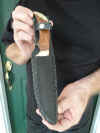
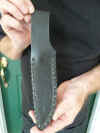



















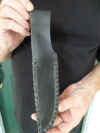

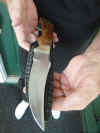
.JPG)
.JPG)
.JPG)
.JPG)
.JPG)
.JPG)
.JPG)
.JPG)
.JPG)
.JPG)
























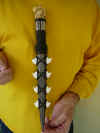
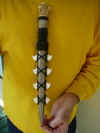




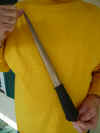
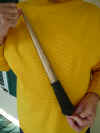



























.JPG)
.JPG)
.JPG)
.JPG)
.JPG)
.JPG)
.JPG)
.JPG)
.JPG)

















































